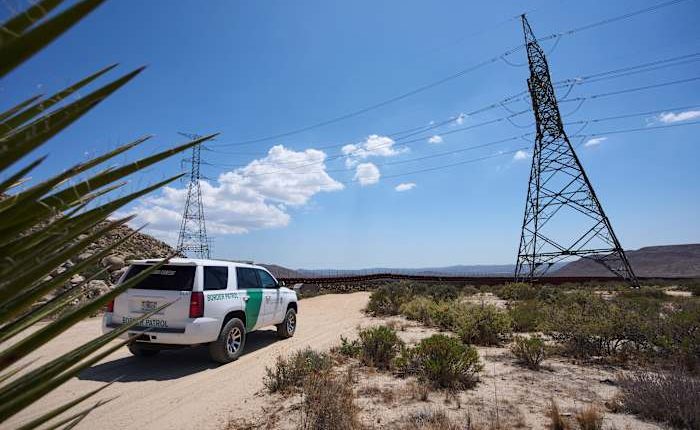Share this @internewscast.com

MCALLEN, Texas – Recent videos of immigration arrests reveal an increasing trend: More Border Patrol agents are operating far from the Mexico or Canada borders.
One video shows a Border Patrol agent hitting a landscaper’s head and neck in Southern California while pinning him during an arrest. The Department of Homeland Security stated the man threatened agents with his weed trimmer. However, his son, Alejandro Barranco, a Marine veteran, claims his father was frightened and did not attack.
With border arrests at the lowest levels in about 60 years, the roughly 20,000 Border Patrol agents are showing up elsewhere.
Here are things to know about the trend:
Why is the Border Patrol working away from the border?
President Donald Trump’s House-endorsed proposal includes an $8 billion budget to boost U.S. Immigration and Customs Enforcement by 10,000 staff. Meanwhile, this agency, tasked primarily with interior enforcement, depends on other federal agencies to achieve a daily arrest goal of at least 3,000, set by Stephen Miller, the White House deputy chief of staff and principal immigration policy architect.
ICE, with only about 6,000 deportation officers, has found a ready partner in the Border Patrol, which is also part of the U.S. Department of Homeland Security. It comes at a time when border arrests plunged to an average of 282 a day in May after peaking at more than 8,000 a day in December 2023.
Agents in the Border Patrol’s Yuma, Arizona, sector assisted ICE officers last week in Philadelphia, Justin De La Torre, the sector chief, said in a social media post. His sector averaged only four arrests a day on the Arizona border last month after peaking at more than 1,100 a day in May 2023.
Greg Bovino, chief of the Border Patrol’s El Centro, California, sector, appeared alongside U.S. Homeland Security Secretary Kristi Noem at a news conference this month in Los Angeles during which U.S. Sen. Alex Padilla was forcefully removed, pushed to the ground and handcuffed.
“We’re here and not going away,” Bovino said, introducing himself to reporters as his agency’s top representative during ICE-led operations in Los Angeles.
Few see any reason to doubt the Border Patrol will remain.
“So long as the border remains relatively quiet, we will continue to see the Border Patrol deployed to act almost as if they are ICE agents,” said Aaron Reichlin-Melnick, senior fellow at the American Immigration Council, an advocacy group.
What is the 100-mile border zone?
Agents are granted by federal law the ability to stop and question people within 100 miles (161 kilometers) of the border, including the coasts. They have heightened authority to board and search buses, trains and vessels without a warrant within the zone.
That encompasses vast swaths of the country that include about two-thirds of the U.S. population, according to the American Civil Liberties Union. Los Angeles is well within 100 miles of the Pacific Ocean.
Beyond that zone, agents are still authorized to work within the United States.
“The Border Patrol can still operate fully in the interior. It’s just that they have less authority to stop and question people,” said Reichlin-Melnick.
What can the Border Patrol do beyond the 100 miles?
Past the 100-mile enforcement zone, Border Patrol agents, like officers working for ICE or the U.S. Customs and Border Protection Office of Field Operations, are classified as immigration officers who are authorized to carry out arrests and detain people on suspicion of violating immigration law. There are some limits.
“They could only search somebody’s car on probable cause that the person has violated the law,” Reichlin-Melnick said. “And so people have somewhat heightened rights against search and seizure outside of the 100-mile zone than they do inside of the 100-mile zone. But each individual case will vary depending on the specific circumstances.”
Copyright 2025 The Associated Press. All rights reserved. This material may not be published, broadcast, rewritten or redistributed without permission.












